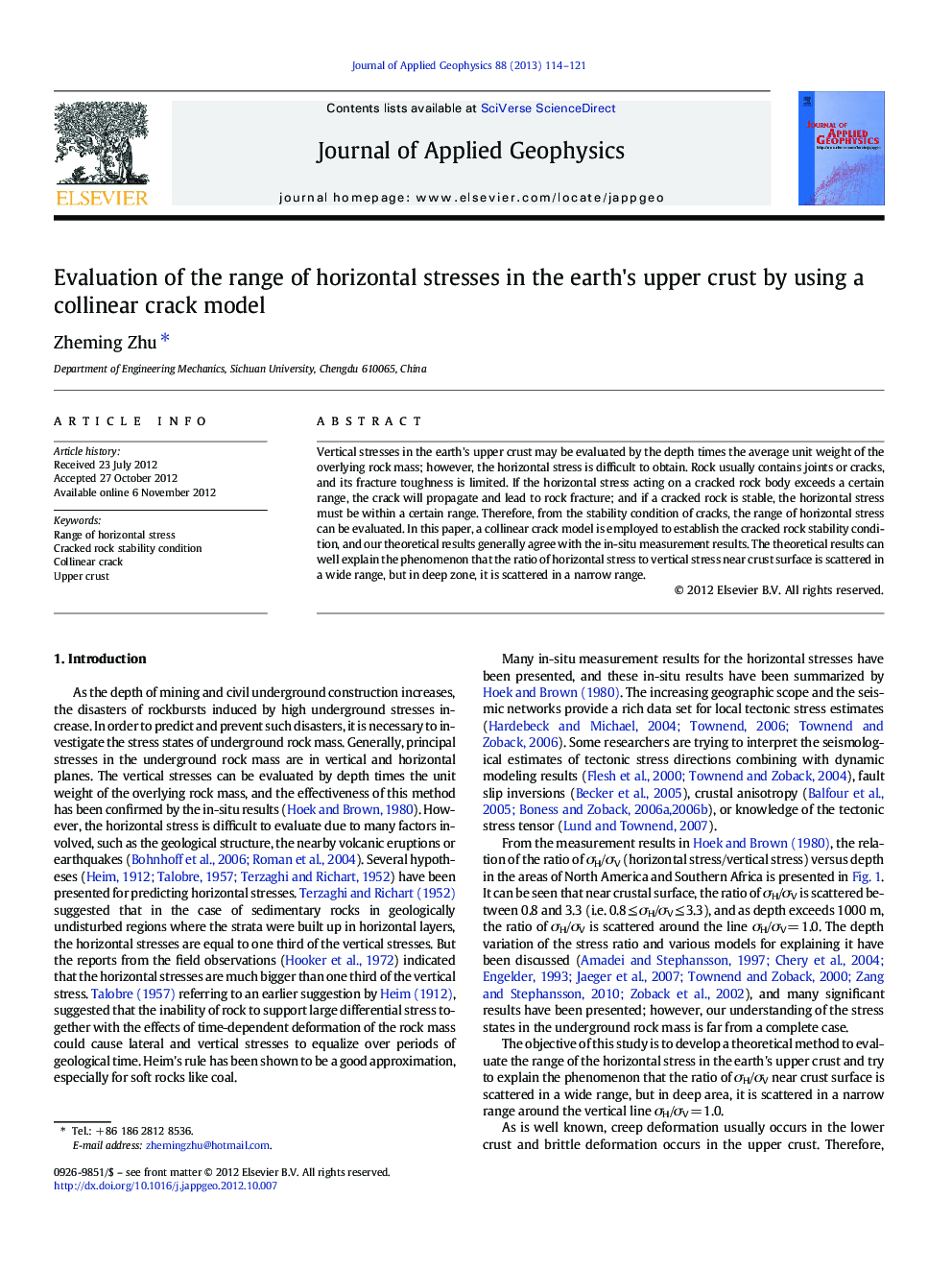| Article ID | Journal | Published Year | Pages | File Type |
|---|---|---|---|---|
| 4740482 | Journal of Applied Geophysics | 2013 | 8 Pages |
Vertical stresses in the earth's upper crust may be evaluated by the depth times the average unit weight of the overlying rock mass; however, the horizontal stress is difficult to obtain. Rock usually contains joints or cracks, and its fracture toughness is limited. If the horizontal stress acting on a cracked rock body exceeds a certain range, the crack will propagate and lead to rock fracture; and if a cracked rock is stable, the horizontal stress must be within a certain range. Therefore, from the stability condition of cracks, the range of horizontal stress can be evaluated. In this paper, a collinear crack model is employed to establish the cracked rock stability condition, and our theoretical results generally agree with the in-situ measurement results. The theoretical results can well explain the phenomenon that the ratio of horizontal stress to vertical stress near crust surface is scattered in a wide range, but in deep zone, it is scattered in a narrow range.
► Using a collinear crack model to establish rock stability condition ► Experimental study to validate the stability condition ► Using rock stability condition to investigate the range of horizontal stress ► Explaining well the in-situ measurement results
